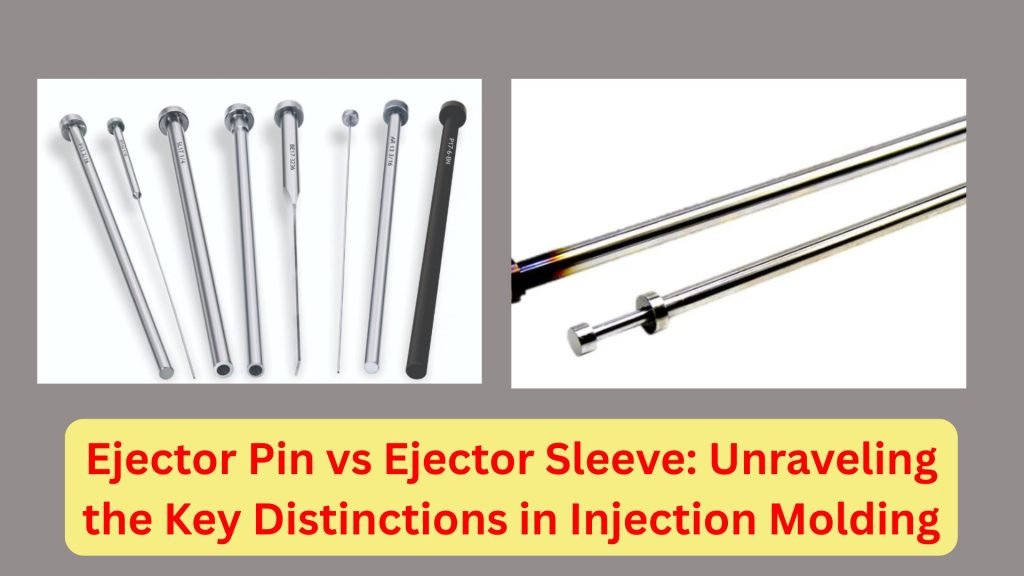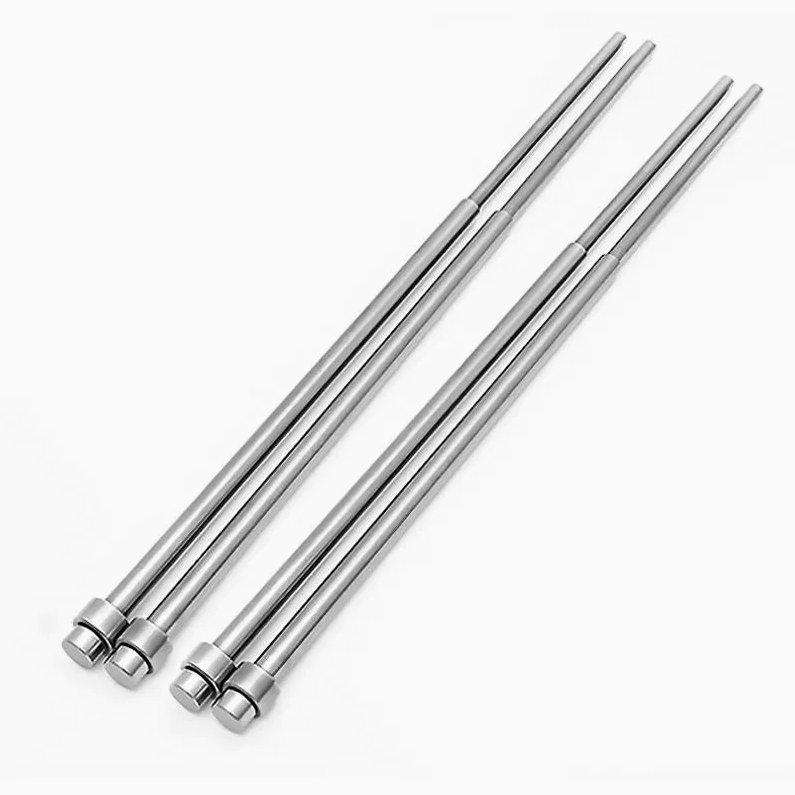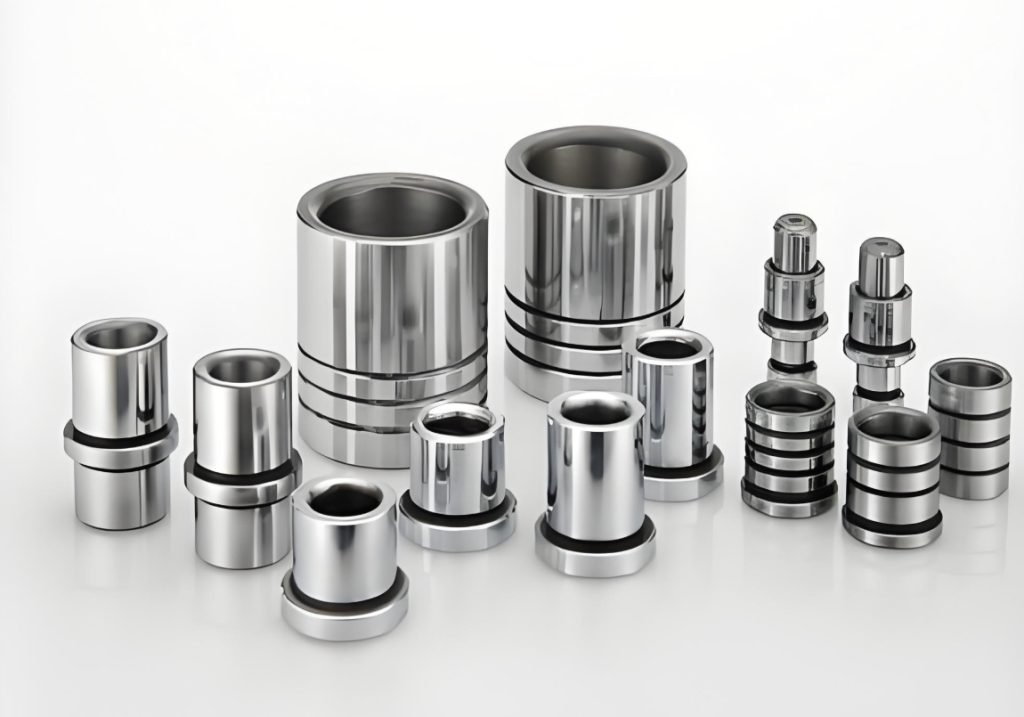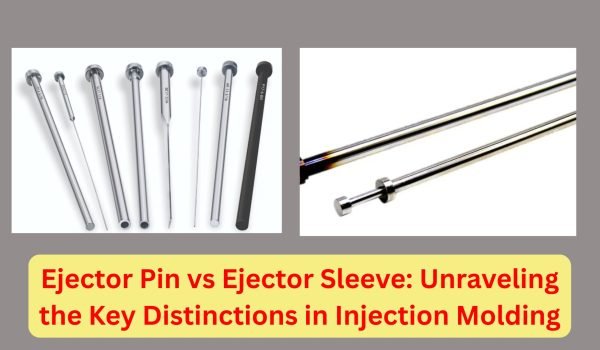The arc of getting parts out of injection molding is a significant consideration for part quality and production efficiency. The two most important parts of this process are the ejector pins and ejector sleeves. While both serve the same function—to eject molded parts—they are designed differently and differ in application and the kinds of parts they are best used for.
In this detailed guide, we compare Ejector Pins and Ejector Sleeves side-by-side based on their structure, working principle, use cases, and impact on the Injection Molding process. If you are a mold designer, an engineer, or someone checking the Injection Molds, at that point, this post will enable you to comprehend their contrasts easily.

What Are Ejector Pins?
Ejector Pins are solid steel rods that push out molded parts from the Injection Mold after the plastic has cooled and solidified. These pins are used at various spots in the mold cavity and are activated as soon as the mold opens.
They find applications for flat or flat geometry parts where centralized pushing can be effective. Since ejector pins, by name, apply force only to localized areas, they are typically arranged in groups to ensure a uniform ejection.
Some advantages of ejector pins are straightforward design, ease of setup, and cost-effectiveness. However, they can leave minor marks on certain parts, which is fine for non-visible or structural areas.
Applications:
- Flat or shallow molded parts: These components possess flat surfaces with little depth, which can be designed for ejection with straight force. Ejector Pins can smoothly push them out without distortion since there are no complex deep contours or internal structures to complicate the ejection process.
- Non-tubular plastic components: Solid or block-type plastic pieces without internal holes or similar cylindrical structures. Ejector Pins offer a simple way to release these from the mold, as these flat geometries do not need the 360° support the Ejector Sleeves provide.
- General-purpose plastic items: Common plastic items like trays, containers, or lids usually have simple shapes. Ejector pins utilized in the form of springs offer easy movement. Since these components are made in volume, pinning can accelerate cycles without compromising ejection dependability.

What Are Ejector Sleeves?
Ejector sleeves are long, cylinder-shaped elements surrounding a center pin or cavity and help push and eject more complex or delicate parts. They exert uniform force around a part’s outer wall, minimizing the risk of part distortion.
This ejector type is commonly utilized for parts with central holes, cylindrical shapes, or threaded portions in which an Ejector Pin at the center can dent or damage the part upon ejection.
Ejector sleeves are somewhat more expensive than pins, but they provide better protection and are better for precision parts. The sleeve itself is advanced to release the part uniformly from the mold.
Applications:
- Tubular and threaded parts: Ejector Sleeves provide the even force needed to eject caps, fittings, pipe-like items, etc. Because the sleeve surrounds the part, it guarantees that ejection occurs without bending or distorting fragile threads or cylindrical features.
- Deep-core components: Ejector Sleeves are particularly effective for molds with long internal cores or deep cavities. They force components off from the outer area so that no inner cracking or shattering can happen due to a central pin.
- Delicate, high-precision parts: When producing components where the surface finish and dimensional accuracy are critical—like medical units or consumer electronics—the Ejector Sleeves help ensure that each item is removed from the mold safely and without damage, maintaining quality and appearance.

Choosing the Right Option for Your Injection Mold
The choice of whether to utilize Ejector Pins or Ejector Sleeves is greatly influenced by the geometry of the molded part and the mold design. Given that tooling credits are met, a poor choice may result in part damage, excessive wear, or longer cycle times.
For example, if you were forming a part with a deep center hole, using an Ejector Pin could apply too much pressure in a small area and cause stress fractures. Meanwhile, an Ejector Sleeve would exert equally constant pressure around the wall and maintain part integrity. On the contrary, if the part is solid and flat, the ejector sleeve would be overkill and only unnecessarily increase tooling costs.
Sound ejection systems manage a trade-off between performance and price. In most complex molds, both Ejector Pins and Ejector Sleeves are used to maximize the results.
Design Strategies for High-Performance Molds
Ejector mechanisms are also important, as mold designers must consider how many will be required and their location and kinds for each part. Even a well-designed and charged part can be spoiled by poor ejection. Simulation software is usually used during the design phase to locate stress zones and determine the best placements for Ejector Pins and Sleeves.
In high-volume getting, it’s essential to decrease ejection system wear. They accomplish this using high-quality tool steels and surface treatments such as black oxide or PVD coatings. These increase the service life of the ejection components, reduce friction, and increase cycle consistency.
The other key strategy is molding synchronization during the mold opening and ejection phase. In products with thin walls, delayed activation of pins can cause parts to stick or warp. Moldmakers precisely time this movement with hydraulic systems or mechanical linkages.
Maintenance and Quality Control Best Practices
Ejector Pins and Ejector Sleeves must be regularly maintained as a part of the Injection Molding process in professional operations. Lubrication, alignment evaluations, and replacement of worn-out parts are critical to preventing breakdowns or damaged products.
Many manufacturers deploy predictive maintenance systems to evaluate the performance of ejection components as they are outfitted with sensors. Pressure sensor data, temperature data, and cycle counts can help predict when a pin or sleeve will fail. This minimizes costly downtime and ensures a steady product output.
Quality control also ensures that molded parts do not have ejector marks, distortion, or incomplete ejection. If any of these issues are found, they often lead back to poor ejection design or worn-out components. That is why molders buy the best ejector components and have them on strict maintenance schedules.
Industry Examples and Use Cases
Automotive applications with internal features and tight tolerances, such as bushings, gears, and transmission components, are common uses for Ejector Sleeves. These pieces need uniform pressure during ejection to hold their shape.
Ejector pins are commonly used for consumer electronics, such as headphone housings or battery compartments, where parts are flat with shallow cores. Multiple pins share the load for small parts at volume to prevent warping.
Ejector Sleeves are also widely used for medical-grade components, which demand precision and cleanliness. These components cannot even withstand surface scratches or deformation, so the uniform load of a sleeve is critical.
Impact on Product Quality and Cycle Time
Choosing the right ejection technique not only influences how easily a part is ejected from the mold but also directly affects the final product’s quality and overall production speed. If the ejector type doesn’t match the part’s design, blemishes, warping, or rejected products can follow.
Ejector Pins can leave surface dings or stress lines when applied to thin or fragile areas. While some of these imperfections may be small, they can interfere with assembly in downstream processes or lead to cosmetic defects in a consumer-facing product. Though not cheap, Ejector Sleeves distribute force evenly and mitigate these blemishes on complex or high-tolerance components.
On cycle time, speedy ejection is critical to keeping the production line moving. Otherwise, sticking can occur, extending mold open time and cycle time. The proper ejector configuration—strategically located pins or properly sized sleeves—is essential for achieving consistent part release and minimizing undesired mold downtime.
The Future of Ejection Systems in Injection Molding
While the manufacturing world moves toward smart factories and Industry 4.0, ejection systems are becoming smarter and adapting as well. These include real-time pressure sensors, AI-driven cycle optimization, and self-lubricating ejector systems, which are starting to appear in high-precision molding operations.
More advanced monitoring systems can also identify abnormal resistance when the part is ejected, which may indicate part warpage, insufficient mold fill, or misalignment of the ejector. This enables operators to instantly address issues, minimizing scrap and maximizing efficiency.
A second trend is modular ejection designs, which allow for quicker tool changes and easier maintenance. This is hugely advantageous for manufacturers running various product lines or operating in “just-in-time” production environments.
These innovations are bringing injection molding to the next stage of efficiency and accuracy—where even the minute part of the system, be it an ejector pin or an ejector sleeve, is designed to perfection.
Learn More with Fecision
Fecision is your One-stop Injection Molding, Mold Tooling, and CNC Machining provider. When designing your prototype or scaling production up, our team can assist with recommending the best ejector systems to ensure a smooth, efficient manufacturing process.
Contact us to discover how we take advantage of state of the art ejector pin and sleeve technology to maximize mold designs—Fengchi for your next molding project—where innovation meets precision.
Final Thoughts
Both ejector pins and ejector sleeves play a pivotal role in injection molding. Still, they must never be chosen on an arbitrary basis. Area and volume textures, each of which is designed with specific use cases in mind, and understanding the nuances of each can save a lot of time and potentially money and improve the structural integrity and visual integrity of final products.
Ejector Pins are usually the best choice for basic solid plastic components that lack inner cores/has core sections or internally threaded sections. They are simple to install, cost-effective, and run high-speed production applications without sacrificing quality.
Suppose the parts you’re working with have hollow centers or are cylindrical forms, or you need to eject them with minimal damage safely. In that case, Ejector Sleeves allow for a more controlled and consistent ejection.
A mix of both components in complex molds may result in well-balanced ejection with tight tolerances. However, as a technical choice and a scientific precision being applied to production, you need to see that choosing the right ejection system is not just practical; it is also a strategic decision shaping your entire production sequence.




